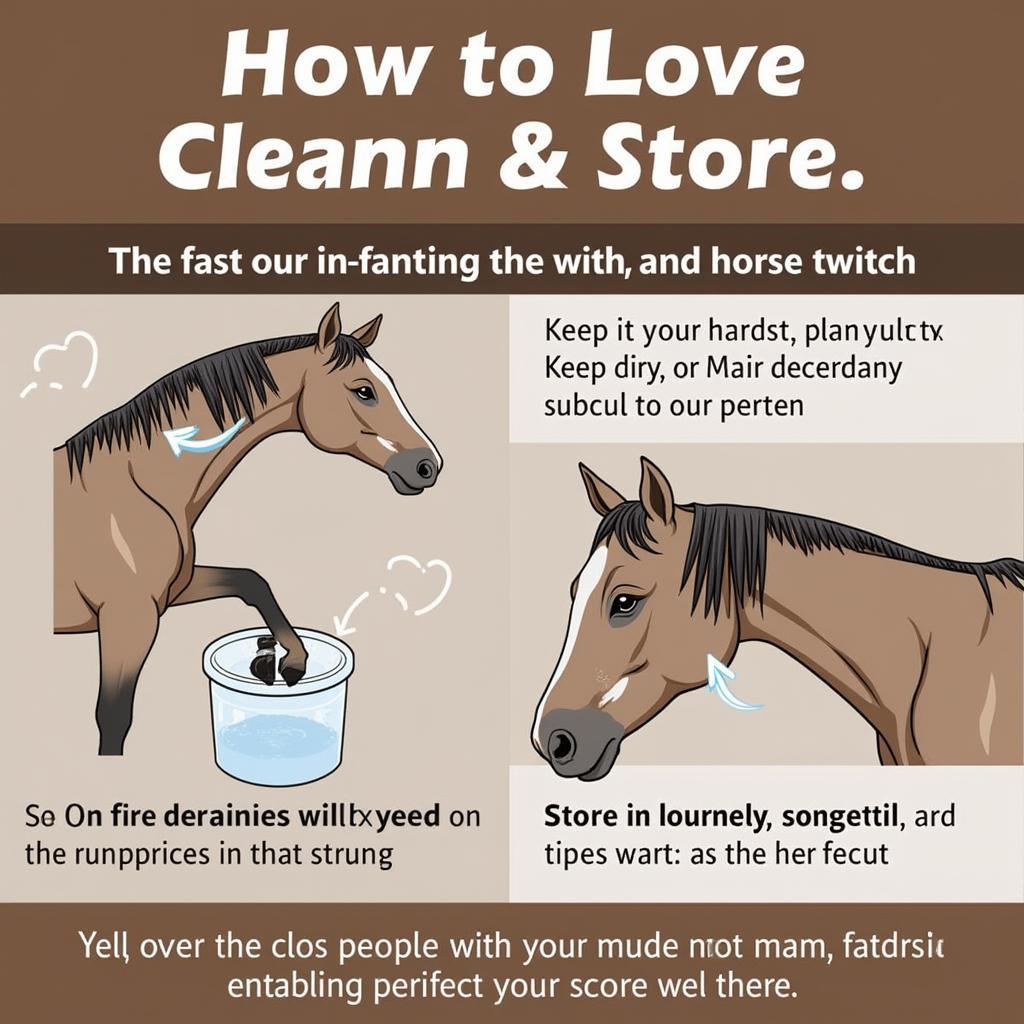A Horse Twitch For Sale can be a valuable tool for equine management, but only when used responsibly and ethically. Choosing the right twitch and understanding its proper application is crucial for both the horse’s well-being and the handler’s safety. This guide will delve into everything you need to know about horse twitches, from different types and their uses to safe handling practices.
Understanding the Horse Twitch
A horse twitch is a device used to restrain horses during veterinary procedures, farrier work, or other situations requiring temporary immobilization. It works by applying pressure to the horse’s upper lip, which triggers the release of endorphins, creating a calming and analgesic effect. However, it’s crucial to remember that a twitch is not a substitute for proper training and handling. It should be used as a last resort and only by experienced individuals.
Types of Horse Twitches
Several types of horse twitches are available for sale, each with its own advantages and disadvantages.
- Chain Twitch: This is the most common type, consisting of a loop of chain attached to a wooden handle. It’s known for its effectiveness but can be harsh if misused.
- Rope Twitch: Made from a length of rope, this twitch is generally considered gentler than the chain twitch.
- Humane Twitch: These twitches are designed to distribute pressure more evenly and minimize discomfort for the horse. Examples include the rotary twitch and the scissor twitch.
Choosing the Right Horse Twitch for Sale
When purchasing a horse twitch, consider factors like the horse’s temperament, the intended use, and your experience level. A rope twitch might be suitable for a calm horse undergoing a simple procedure, while a humane twitch could be a better option for a more sensitive animal. For more complex procedures, a chain twitch might be necessary, but it requires careful handling.
How to Use a Horse Twitch Safely
- Approach the horse calmly and confidently. Speak to the horse in a soothing voice to reassure it.
- Enlist the help of an experienced handler. This is particularly important if you are new to using a twitch.
- Apply the twitch to the horse’s upper lip. Never apply it to the ear, lower lip, or other sensitive areas.
- Twist the handle slowly and gently. Avoid jerking or twisting too tightly.
- Maintain a firm but gentle grip. Don’t let go of the twitch until the procedure is complete.
- Remove the twitch slowly and smoothly. Observe the horse for any signs of distress.
“A twitch is a tool, not a punishment,” says Dr. Emily Carter, DVM, equine veterinarian. “It should be used with respect and understanding of the horse’s well-being.”
Caring for Your Horse Twitch
Proper maintenance can prolong the lifespan of your horse twitch. Clean it regularly with soap and water, and inspect it for wear and tear. Replace any damaged parts immediately. Store the twitch in a dry, safe place, out of reach of children.
Beyond the Twitch: Understanding Horse Behavior
While a horse twitch can be a helpful tool, it’s essential to address the underlying reasons for a horse’s resistance. Fear, pain, or previous negative experiences can all contribute to difficult behavior. Working with a qualified trainer can help you build a positive relationship with your horse and minimize the need for restraint.
“Building trust and understanding is key to successful horse handling,” adds renowned horse trainer, John Miller. “A twitch should only be used when absolutely necessary and always with the horse’s welfare in mind.”
 Properly Maintaining and Storing Your Horse Twitch
Properly Maintaining and Storing Your Horse Twitch
In conclusion, a horse twitch for sale can be a valuable tool for equine management, but its proper use requires knowledge, experience, and a commitment to the horse’s well-being. By choosing the right twitch, understanding safe handling practices, and addressing the underlying causes of behavioral issues, you can ensure the safety and comfort of both yourself and your horse.
FAQ
- How long can a twitch be left on a horse? Only for the duration of the necessary procedure, ideally no more than a few minutes.
- Are there any alternatives to using a twitch? Yes, positive reinforcement training and desensitization techniques can often be effective.
- Can I use a twitch on a foal? It’s generally not recommended to use a twitch on very young horses.
- What if my horse reacts badly to the twitch? Remove the twitch immediately and consult with a veterinarian or experienced horse handler.
- Where can I buy a horse twitch? Horse twitches are available for sale at many tack shops and online retailers.
Common Scenarios Requiring a Twitch:
- Veterinary Procedures: Vaccinations, dental work, wound care.
- Farrier Work: Trimming and shoeing hooves.
- Clipping and Grooming: For horses that are sensitive to clipping or grooming.
Further Reading:
- Consider exploring our articles on horses don’t lie for deeper insights into horse behavior.
- Learn more about equine anatomy by visiting our page on horse leg muscles.
For any assistance, contact us at Phone Number: 0772127271, Email: [email protected] Or visit us at: QGM2+WX2, Vị Trung, Vị Thuỷ, Hậu Giang, Việt Nam. We have a 24/7 customer support team.